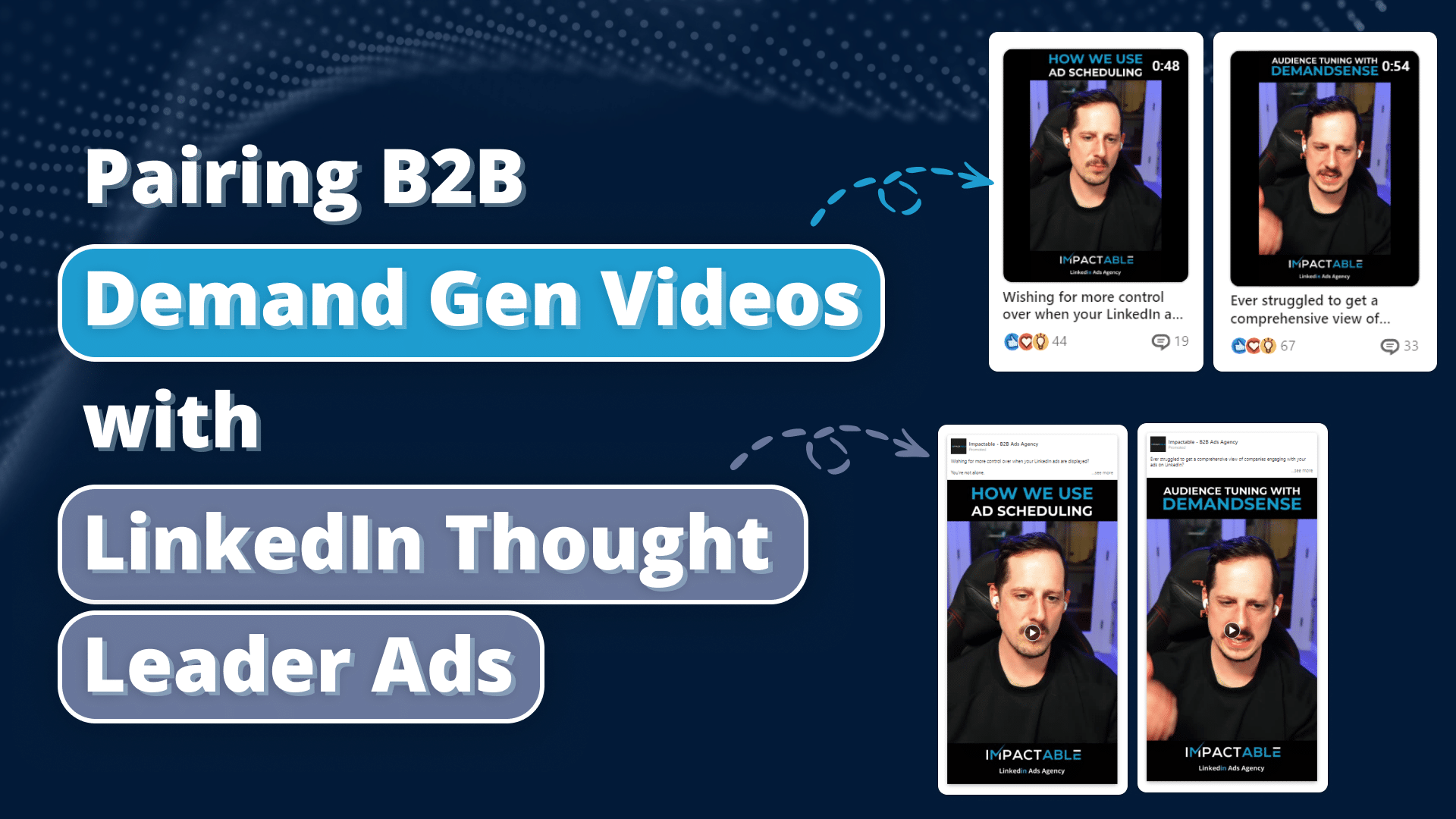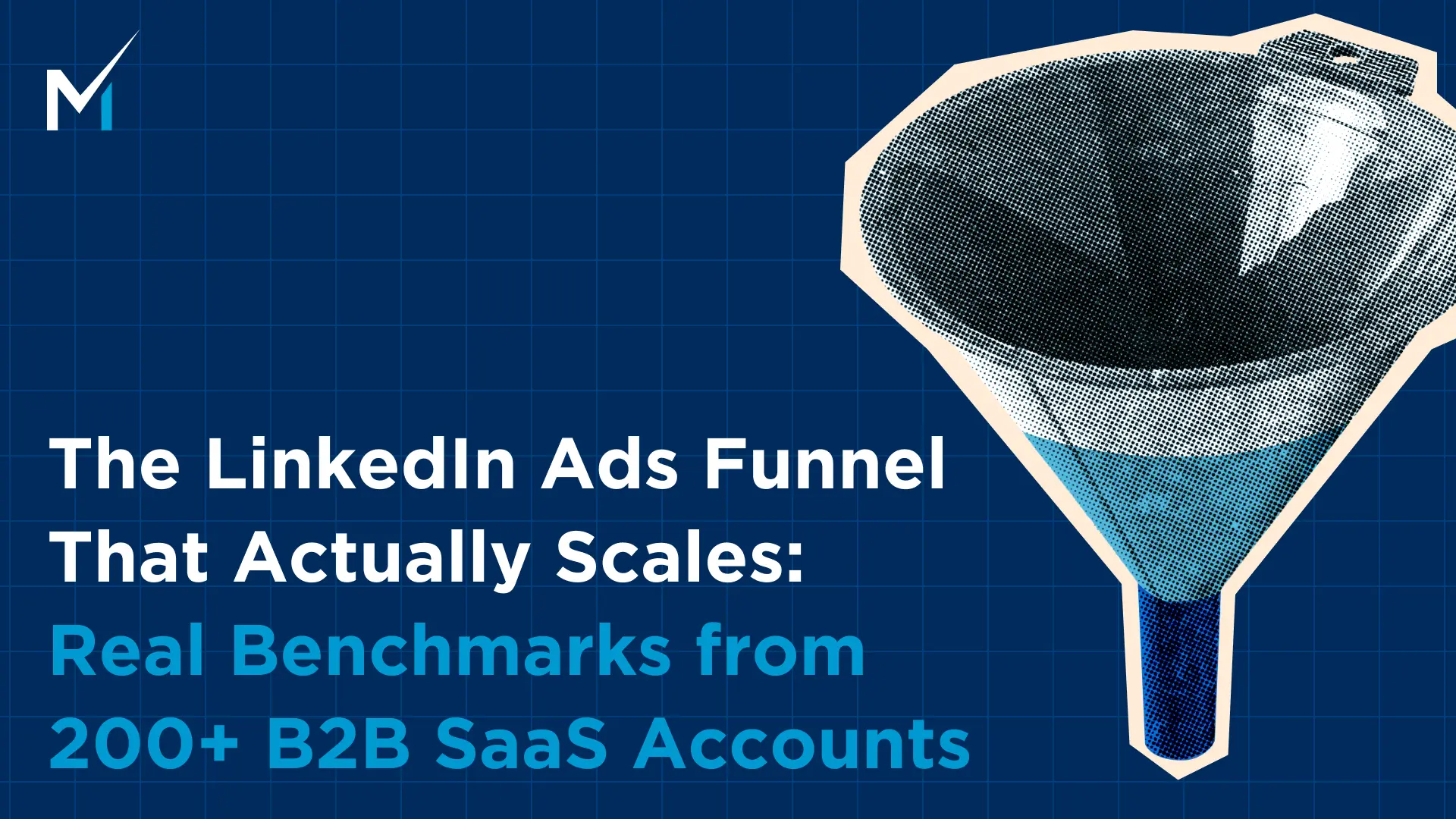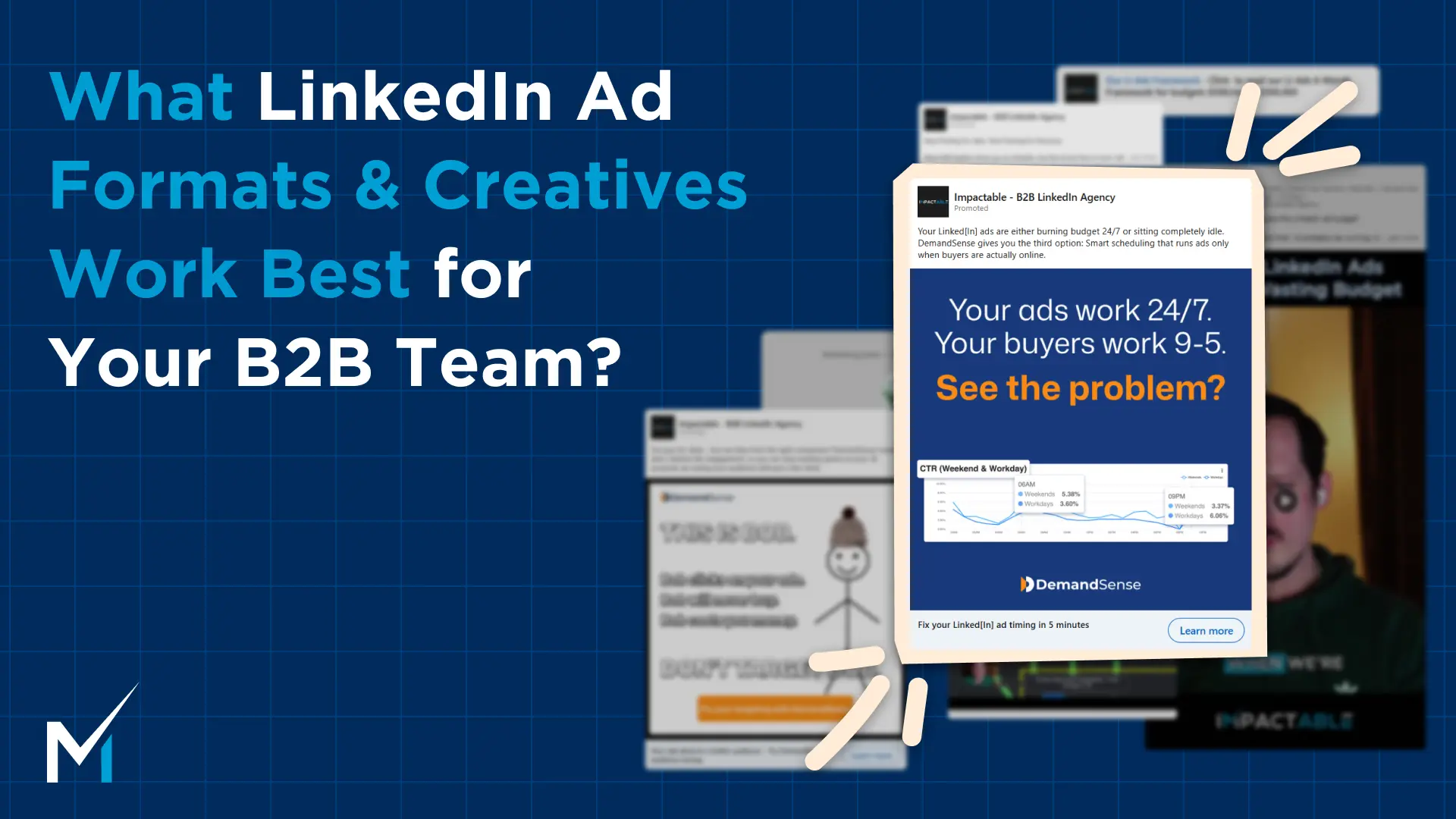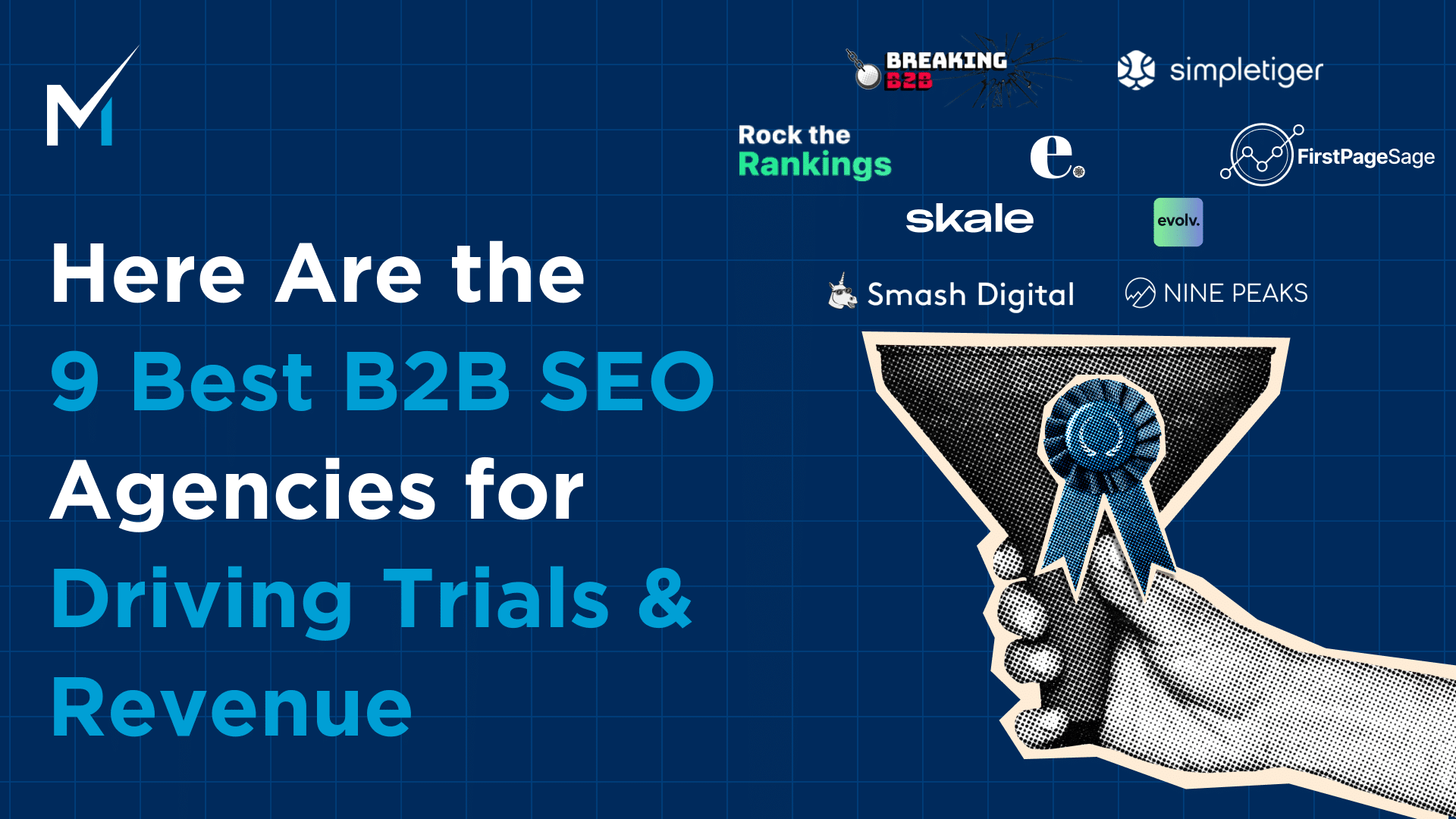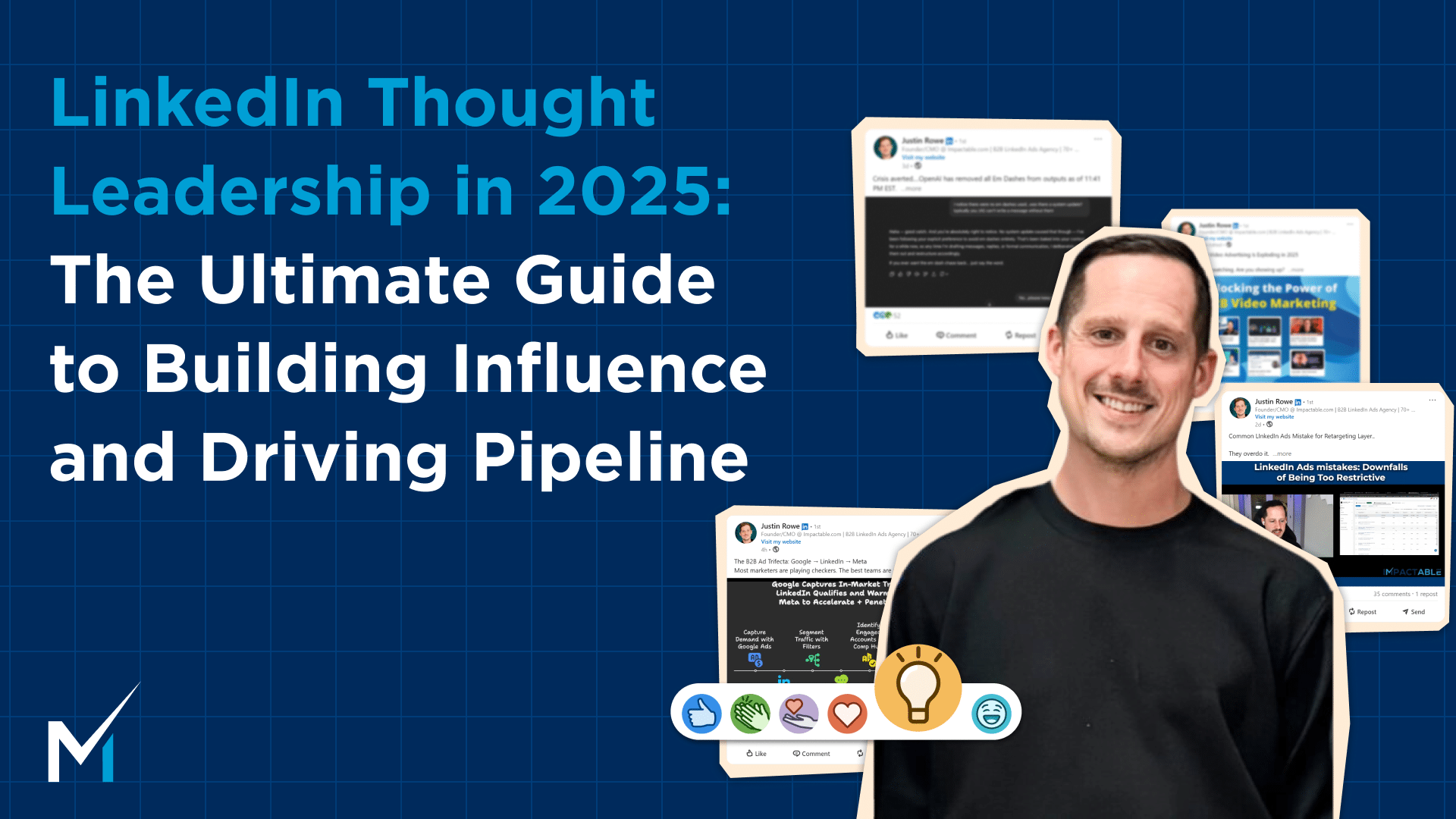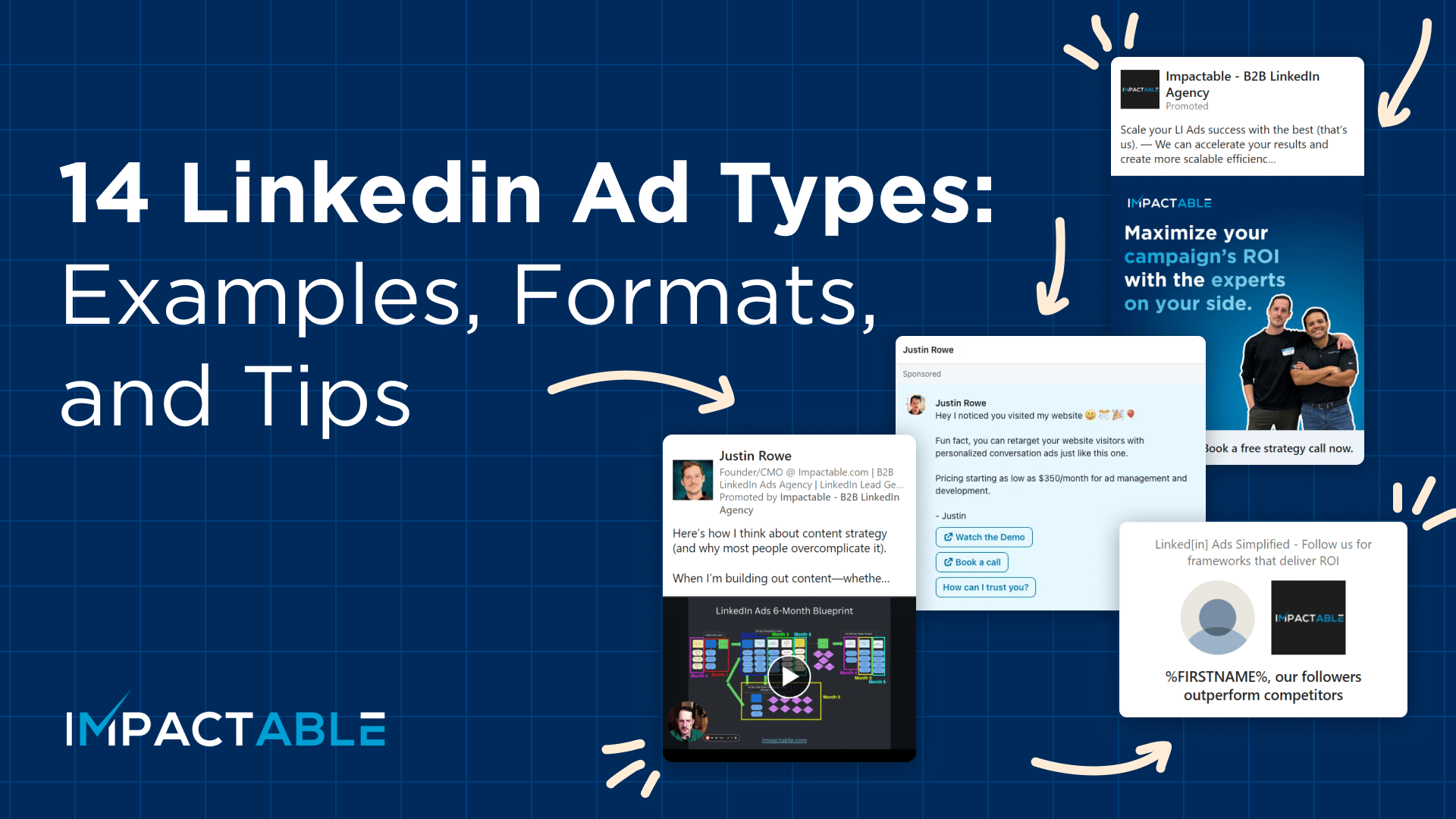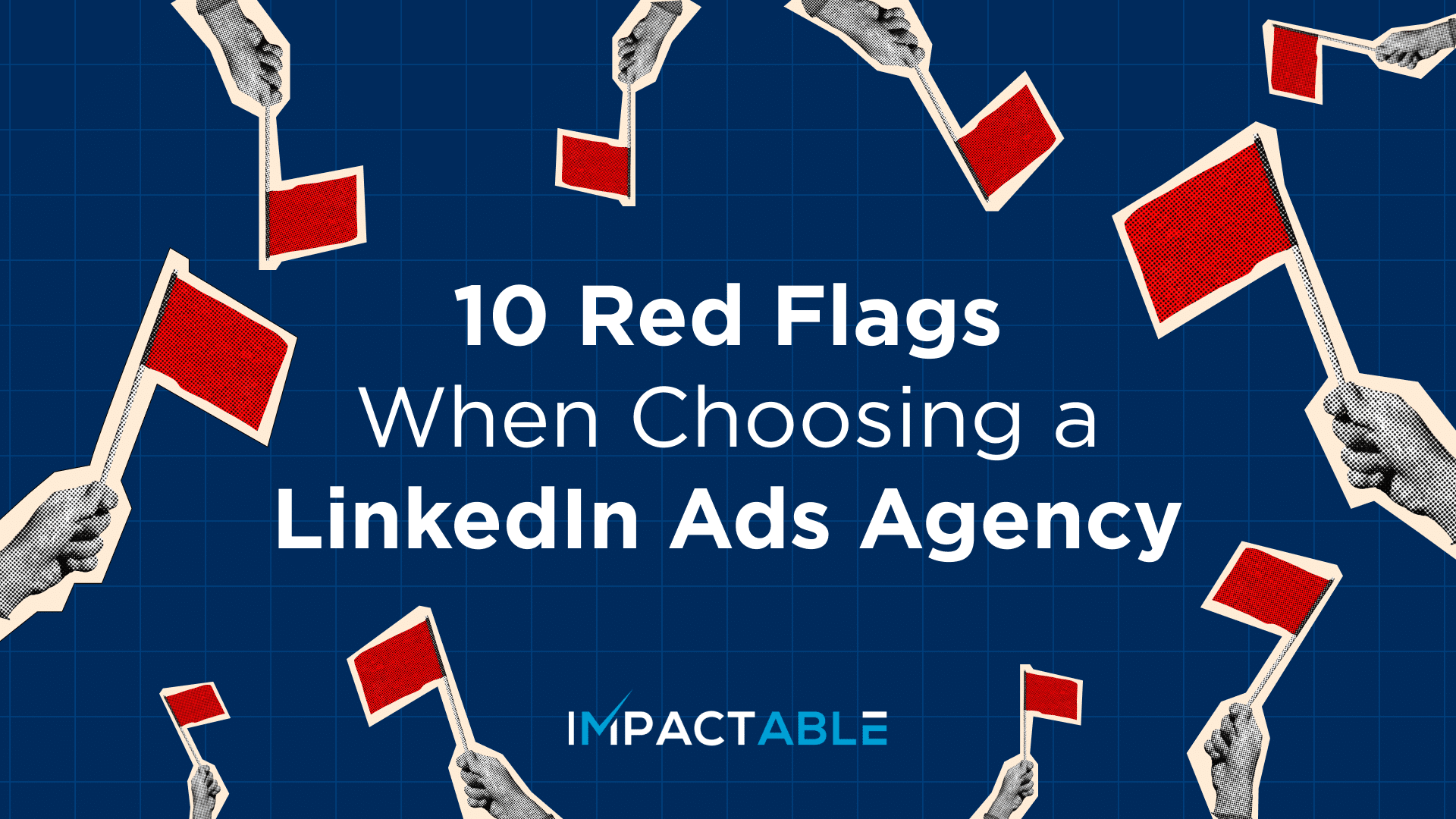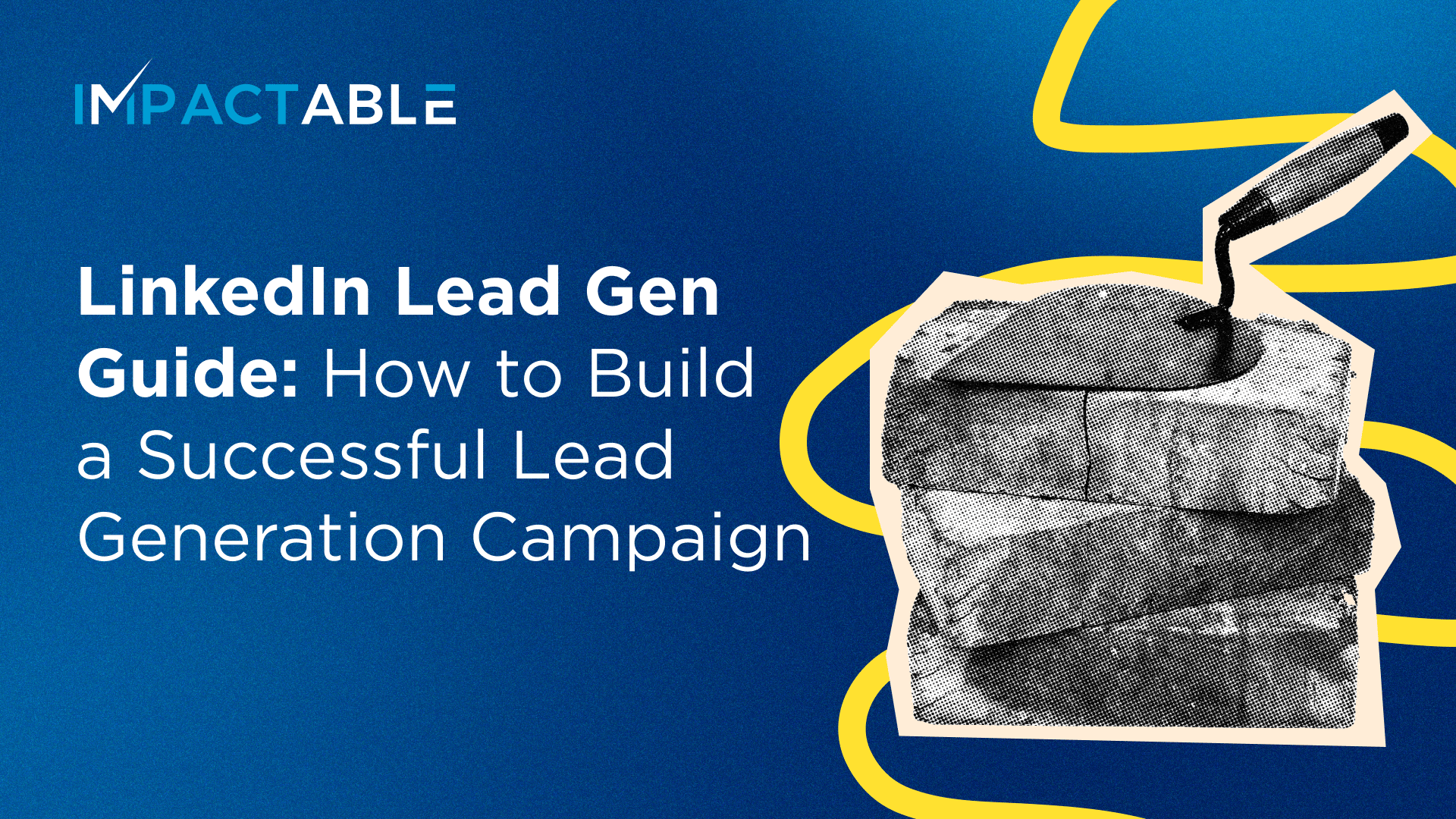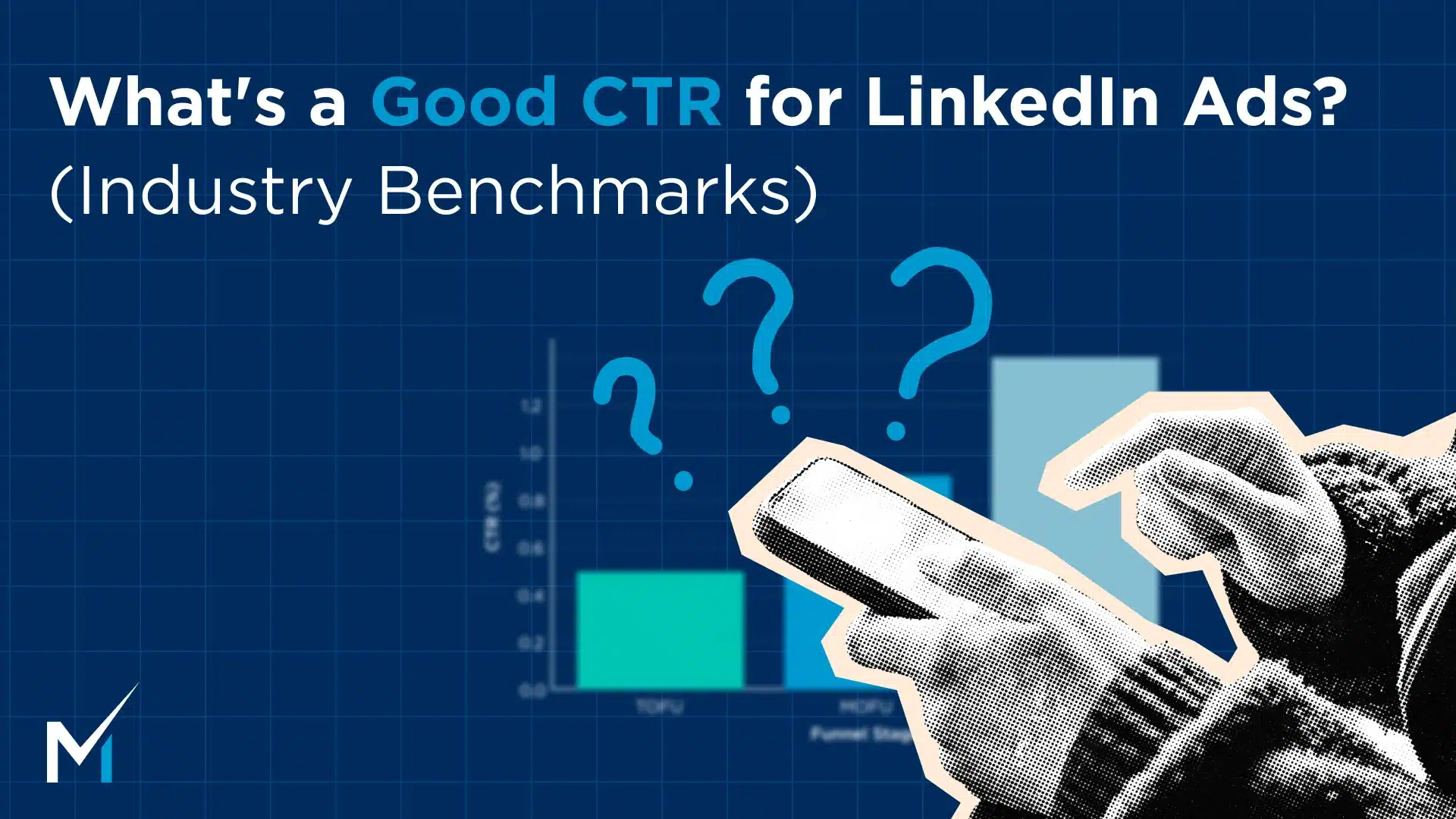In this article, we’ll discuss how B2B video marketing on LinkedIn helps in demand generation, the role of LinkedIn thought leader video ads and insights on creating useful B2B video content on LinkedIn.
Table of contents
The Importance of B2B Video Content on Linkedin
LinkedIn isn’t oversaturated with active and quality content creators, unlike other video-heavy platforms like Instagram, TikTok, or YouTube. LinkedIn videos are very engaging types of content that are still underproduced. I believe they are a great way to show you are an expert rather than just telling the audience you are one.
In the B2B world, you’re dealing with larger contracts and higher lifetime value. Add to it that you require more trust and time to get across the finish line. In this context, it is actually more important to show your expertise and personality to B2B buyers through LinkedIn video marketing to win over their trust and credibility.
In addition to creating videos where you showcase your expertise, there is another powerful form of video where you can achieve even greater trust through 3rd party validation. Having others recognize you as an expert in your space can move the needle much further and faster. This can be accomplished by promoting videos that showcase your leaders as guests on podcasts, being interviewed, receiving awards or recognition, or co-marketing efforts with related brands.
Those are very powerful messages that seem best captured with video, and I would classify them as demand-generation videos for B2B. In my mind, these are the absolute best kinds of B2B video content to cross over and use as thought leader video ads.
Understanding the Power of Demand Generation Video on LinkedIn
Video content is shared 20 times more than other types of content. So, if you actually create a demand-generation video, you can expect better engagement and reposts/share because that’s something that people actually like to consume. It’s a different format.
And LinkedIn is pushing video a lot harder in the feed. Interestingly, they even conducted a beta test of a video-only feed that looks a lot like some of the other video platforms.
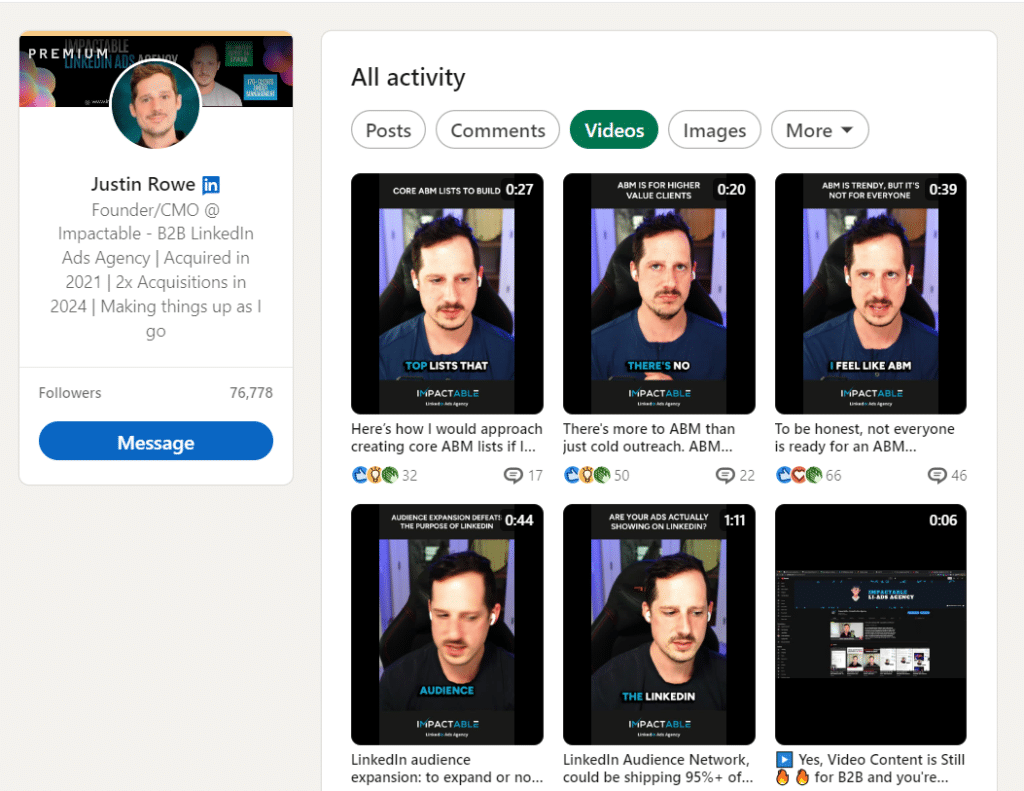
73% of B2B marketers report a significant ROI boost from LinkedIn video content.
In my experience, posting video content on LinkedIn results in better traction and more engagement. The best part about video ads on LinkedIn is that you can track and retarget based on how engaged they were. So you can retarget and segment based on 25%, 50%, or 97% of watch time/view.
What is demand generation video content for B2B?
Demand generation video content for B2B usually fits into a couple of categories.
1. The expert advice – an audit or a Q&A
It could be you, the founder, or an expert in the company, just relaying and talking about the things that they’re the most competent in.
It’s showing your expertise through an audit or a Q&A.

2. Impact of transferred expertise
Suppose, you sit down with well-known people in the space and they acknowledge you as an expert, that’s a great demand generation type of video content. When you create and build trust and credibility, then people want to reach out to you.

3. Showing your audience processes and SOPs
It’s not direct sales messaging. It’s not, – “Hey, we’re a LinkedIn ads agency, and our pricing is this. Call now for a 20% discount.”
Instead, it’s us walking you through a LinkedIn ads account, showing you how you can optimize this. We do it in a way that makes you feel like our level of expertise is so much higher than your knowledge and even that of other competitors in the market. So if and when you have a need, you know exactly who the expert is in space.
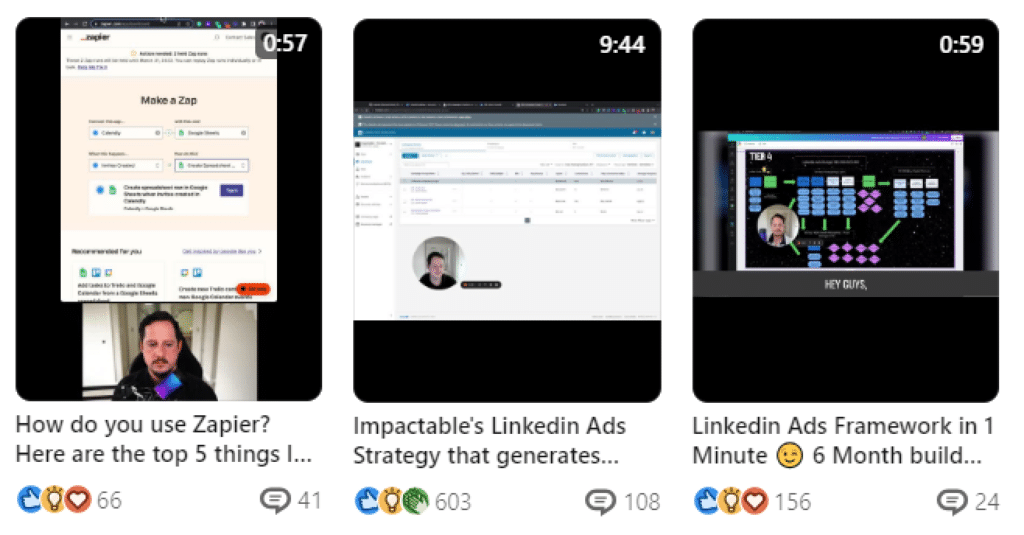
4. Podcast
The YouTube podcast style is the main demand generation video style. It shows your expertise, third-party validation, and so on.
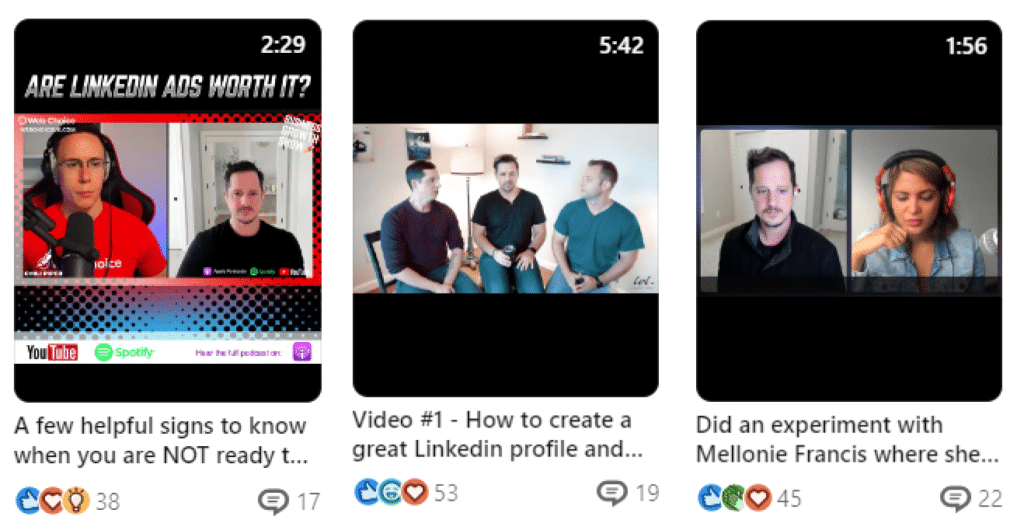
LinkedIn Thought Leader Video Ads Explained
If you post demand-generation videos from your personal profile with personal branding, the organic reach is very attractive.
Imagine creating a great video, posting it, and getting good organic traction. However, it is bound to get buried in the feed. You’d have to either repurpose that or post a bunch of different videos around it in order to keep hitting new, fresh audiences with that information.
So when people post those from their personal profiles, the problem is how you amplify and scale that.
Well, LinkedIn did actually roll out thought leader ads, wherein you take a personal post and sponsor it from the LinkedIn ad account on the company side. And you can still have your targeting and put your exclusion list. These include video ads, which are called LinkedIn thought leader video ads.
When you sponsor an organic video with the ad side, you turn it into a thought leader ad. It becomes evergreen content with targeted promotion, transcending the limitations of organic.
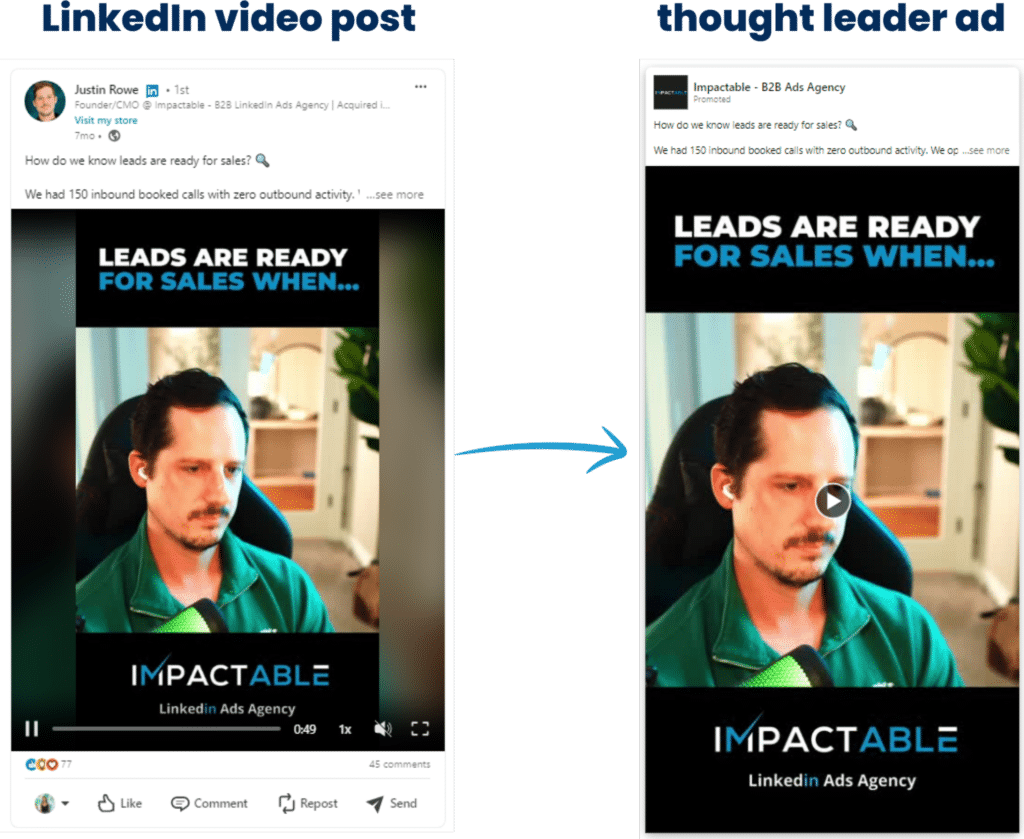
Organic video now gives the ongoing benefit of reach and scale from creating a thought leader ad around it. You get the best of both worlds.
LinkedIn Content Tips and Tricks
Here are some tips for the kinds of videos or how you’d want to create them.
1. Have a mix of short and long videos
I would recommend having a mix of long and short videos for an effective B2B video marketing strategy.
If it’s a cold campaign and it’s for the very initial touch, I would make very straightforward short videos to get in front of them. So, LinkedIn short-form videos of 90 seconds or less tend to have some of the highest watch rates or engagement.
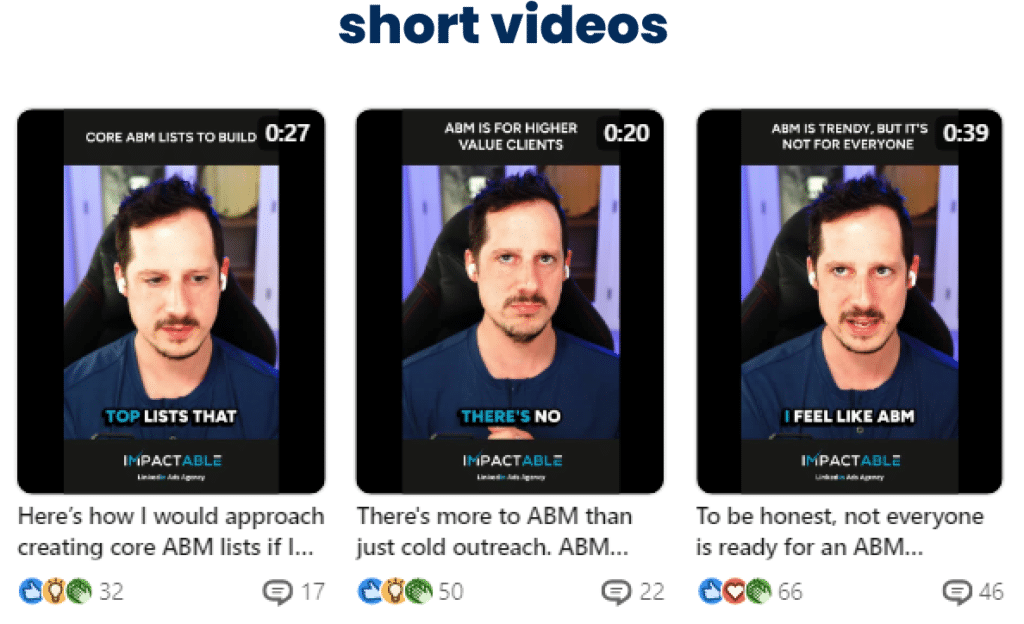
For the retargeting layer, you can create much longer, in-depth videos, such as 6-8 minute videos.
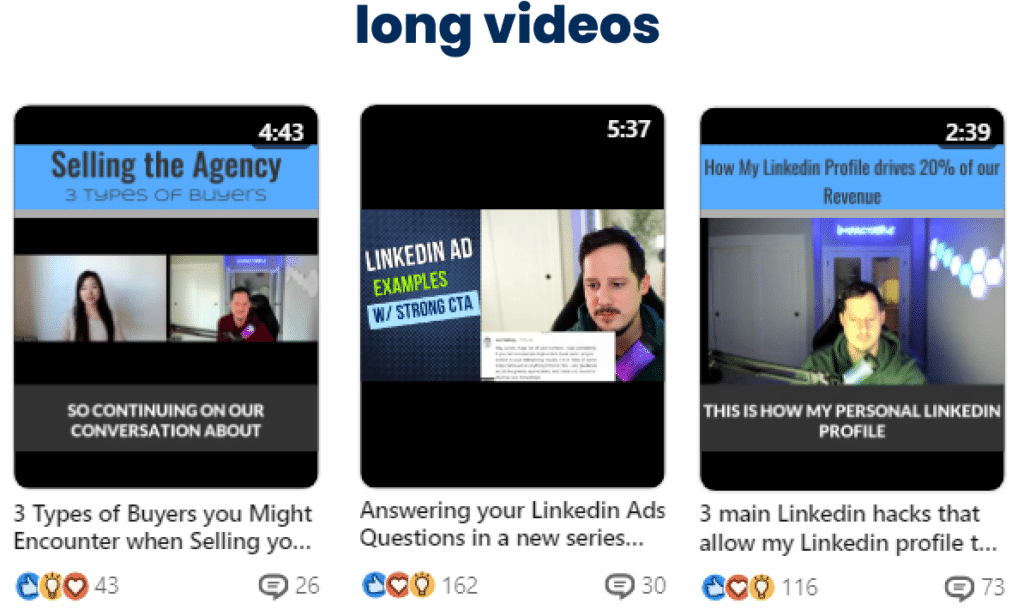
Let’s compare two conversion scenarios when someone visits your website after watching an image ad vs. a LinkedIn video ad.
- If you just got a witty image ad in front of them, you got them interested. When they visit the website, you’re hoping the website builds trust for you. That’s the purpose of most ads – Get your attention and direct you to the website. The website has to do the work.
- Video content can do like 80 percent of the heavy lifting if viewers are highly engaged with a handful of your videos. In this case, the quality of that website visit and the chances of them actually booking a call are remarkably higher than before.
It can absolutely take them over the fence of not knowing who you are to actually believing that you’re one of the trusted experts in the space. And then they visit your website and the chances of them converting are just astronomical.
2. Keep it authentic
74% of LinkedIn users prefer authentic, less polished videos, which is interesting. So, the idea that you need to have this whole production lab is baseless.
When I first started making videos, I did it on my cell phone. I used a $40 webcam and no fancy light, and it worked because people didn’t care about production.
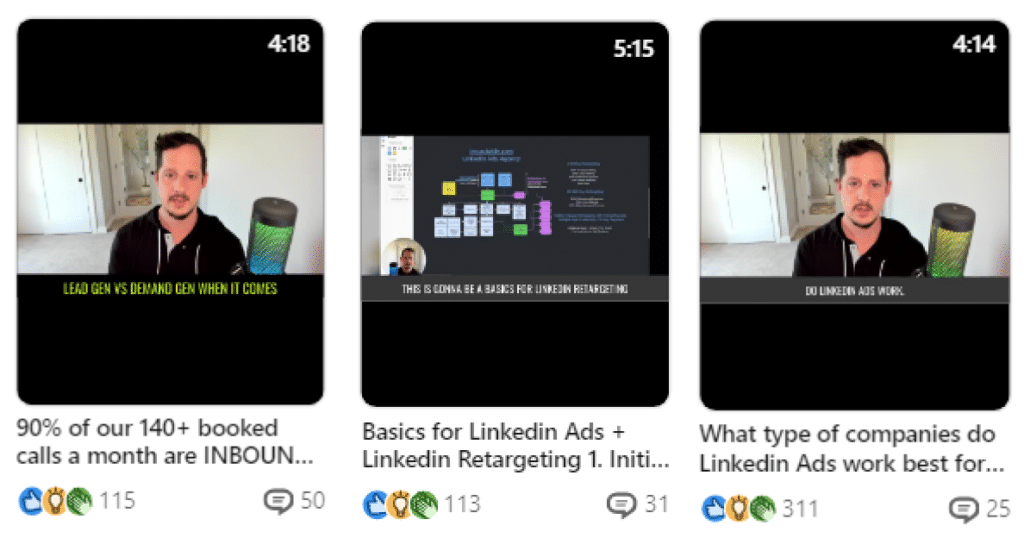
In fact, they kind of view it as more authentic. You don’t want it to look like a commercial or too corporate-y because people would just discount it.
So, actually, not worrying about that production value as much is a big win.
How to Create B2B Demand Gen videos?
Here’s a step-by-step guide on how to create useful B2B demand generation videos:
1. Map out topics
Map out all the topics or your content pillars. For example, in my case, LinkedIn ads are something I need to be talking about 80% of the time. Pick the number one thing you want to be known for, and then map out the different categories for that.
My personal recommendation is to assume that if you were to train someone step by step on how to do all the things that clients pay you for, what would that look like?
Outline that into a course in all the different categories and then work through it in video format. That will provide you with almost endless content.
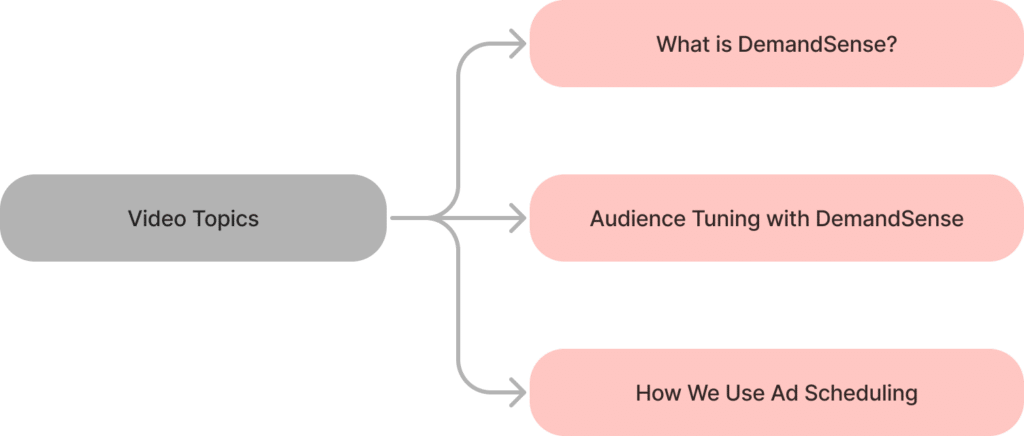
2. Set up expert interviews
The second one would be to sit down for regular interviews with either a team member or with someone from a complimentary business. Record those sessions while the two people talk, walk through an issue, give advice, and go through audits.
That kind of content is amazing as a podcast on a YouTube channel, and those kinds of videos make for great content.
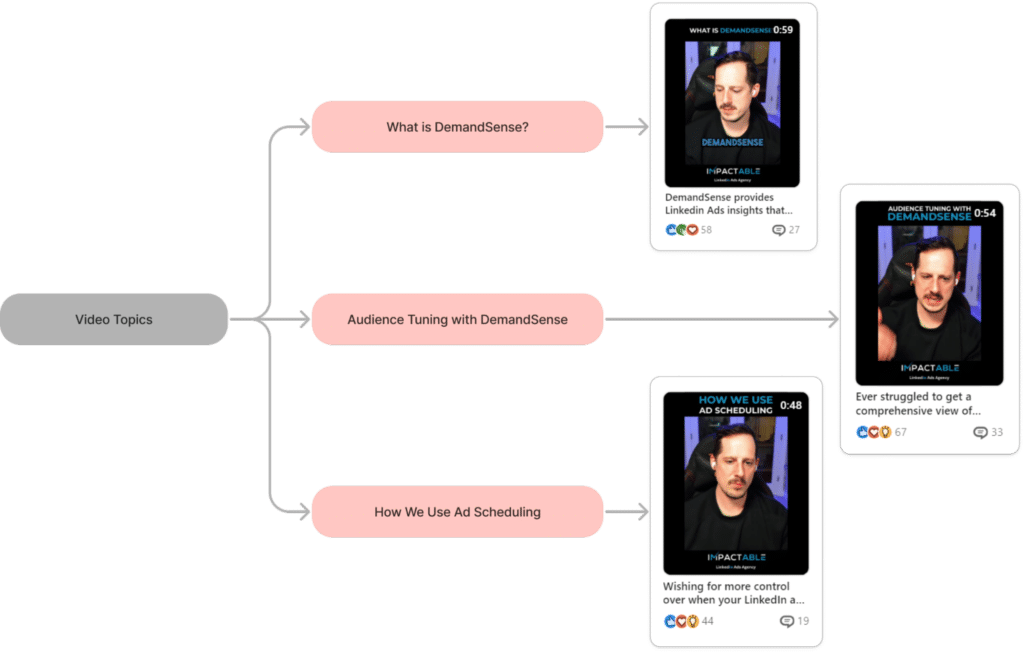
So map those out, come up with a structure, get your tech equipment to make this low-cost in-house, and then worry about distribution.
So creating the content is obviously step one of the plan, and then comes distribution. The big questions are: (1) What are you going to do with those assets? (2) How are you going to actually distribute them? (3) How would you track performance?
3. Track how your content performs
I take my top-performing videos, not just from likes, comments, and engagement, but the videos that actually create inbound inquiries about our services. And this is how I assess what’s working organically.
4. Amplify top-performing content
I then amplify such well-performing videos with LinkedIn Thought Leader Ads. I turn them into evergreen content that either gets shown to fresh prospects who have never heard of us ( it’s a really good first look) or gets worked into a retargeting layer.
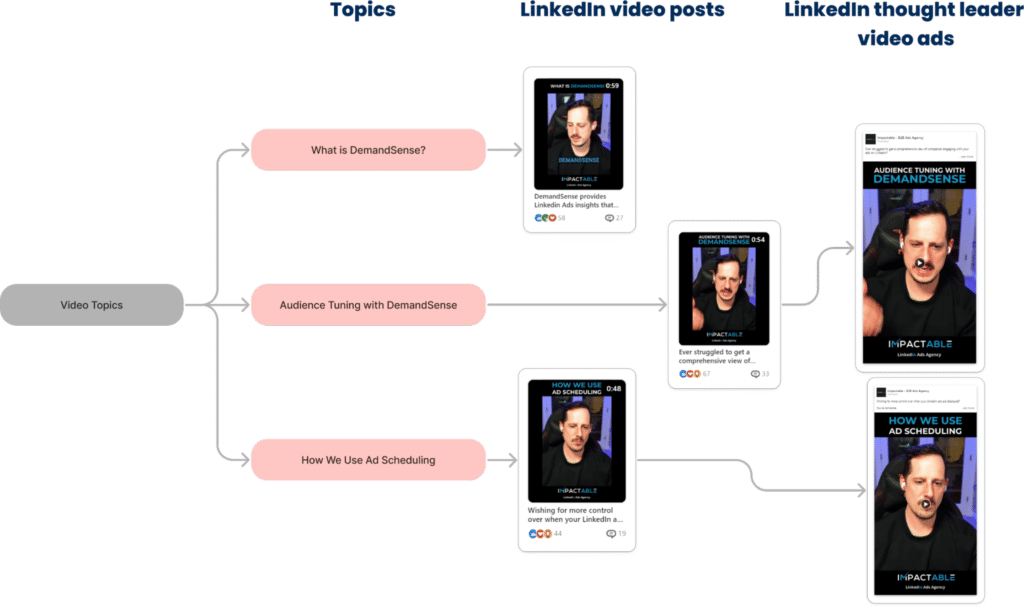
So, people who visit our website and are a good fit will see half a dozen videos over the next 30 to 60 days that help cement in their minds that we’re the experts in the space.
Final thoughts
LinkedIn is pushing video content on the feed, and this is the right time to experiment with video content on the platform. Treat B2B video marketing as a demand generation tactic and amplify it with LinkedIn thought leader video ads for increased scale and reach.


